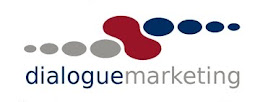 Sigh. Today I want to spend a little time housekeeping. Canada is about to pass its own anti-spam legislation, and it may have some implications for you Canadian marketers.
Sigh. Today I want to spend a little time housekeeping. Canada is about to pass its own anti-spam legislation, and it may have some implications for you Canadian marketers.The new legislation will be known as ECPA (Electronic Commerce and Protection Act). No real surprises, given that anti-Spam legislation is nothing new around the globe. What is a surprise, though, is that Canada has chosen to go the opt-in route, unlike the USA CAN-SPAM legislation, which is opt-out. Although this could make the legislation more effective, it also makes me nervous, given Canada's proclivity to over-burden industry with onerous requirements, and in so doing, stifle entrepreneurship.
Like all good things in life, they always have to be ruined by the spoilers; in this case the nasty spammers of the world. And I use the word nasty with intent. Hard core spam is like pornography, you know it when you see it. But many legitimate marketing emails can also be defined as spam, since spam is ultimately defined by the recipient; and it is these emails that concern me. There are those pious genuises that will claim that this issue is content and timing related. Perhaps, except that what works today doesn't always work tomorrow.
A few years ago some of us had telemarketing Do Not Call Lists (DNCL) imposed upon us; and again, because of some spoilers. This has had the effect of reducing those annoying calls during dinner. It is hoped that anti-spam legislation will have the same effect. We'll see; and if it does, do you think the corporates and the ISPs (Internet Service Providers) will lower their filters? I doubt it.
Legitimate and professional email marketing efforts incorporate many things; unsubscribe functionality, bounce management, blacklist monitoring, whitelisting, opt-in, opt-out, message design, personalised from addresses, privacy clauses, accurate subject lines, relevant content, metrics and more; all in an effort to get into an inbox.
The majority of service providers already include most, if not all, of these functions. However, much of problem lies with the marketers; the users of the email platforms. Email marketing, traditionally, has always been seen as a cheap marketing tool. So some marketers may have been careless in its application. That being said, a lot of that has changed and let's not lose sight of the fact that the bulk of email traffic is illegitimate, hard core spam.
So what is my point?
My point is that good email practice has to become a given, and is increasingly moving in that direction. Let's not throw the baby out with the bath water. Remember to focus on the real enemy, the hard core elusive culprits. In the same breath; it is high time that email marketing was taken seriously, and probably outsourced to those professionals that stay abreast of the industry best practices.
To state my case; I applaud any efforts to minimise hard core spam BUT, and there always is a BUT. It is unlikely to reduce the levels of illegitimate spam, given that spammers can operate from anywhere on the planet, with many tools at their disposal, and seemingly with impunity. I hope it isn't the legitimate marketer, that is going to be brow beaten.
Legitimate marketers are going to carry a burden. Your ability to prospect targeted individuals will be severely curtailed, like with the DNCL, and this is potentially a business killer. Also, you will have difficulty implementing a win-back strategy too, if it falls outside a certain time period (Well, actually no difficulty. You simply can't do it). In all liklihood, I can see the day, in the not too distant future, where it is virtually impossible to prospect via email, fax or telephone. Who knows how a new business will be expected to generate awareness? Social media? I don't think so.
So it may end up being a case of wanting to pass legislation to protect consumers from the "most dangerous and damaging forms of spam", but which has an alternative, undesired effect. Personally, I think we need to move in the direction of IP Reputation services.
Download a printable copy of this article.





